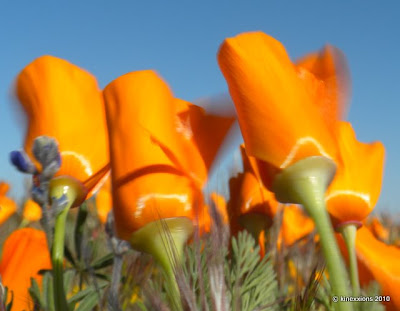Because quite a few of you have ordered hats from me as part of barter deals via the Trading Post, I wanted to announce that: (1) I am now done with all the ones I promised thus far and they are going out in the mail on Monday, and (2) My waiting list has cleared and I am ready for more trades. Thank you for your interest in these, and I am happy to make them. I have problems with the nerves in my hands and knitting is a good form of physical therapy for that - so it's great to be "forced" to do it. While I am not looking to start selling hats, I am more than happy to trade them for bicycle components and whatever other stuff might appear on my Trading Post "want" list. Since I've received a lot of questions about the hats, I thought I'd provide some details here, and link to this post whenever someone has a question. Please feel free to skip if this is not of interest.
Materials and Patterns: I use a soft 100% Peruvian wool. I have a very good source for the wool now and can get pretty much any colour you want. I don't use patterns, but make up my own designs.
Styles: I can make three basic type of hats in many variations: a ski-hat ("beanie"), a rounded Scandinavian style hat, and a slouchy beret. I don't make hats with ear flaps or visors.
Texture: Most of my hats have some textural variation to them. This adds structure to the hat, as well as visual interest - especially when the hat is all one colour. If you prefer them to be smooth, that is fine as well.
Extra warmth? By default, the hats are warm and wind-proof. But if you want one that is extra warm, I can do that by using stitching that makes the hat thicker.
Summer hats? I can also make a summer weight beret using a delicate cashmere blend.
Colour combinations: Hats can be made single tone, or in various colour combinations. I like stripes and organic forms. If you have something specific in mind, let me know!
Which hat for under a helmet? If you want a hat specifically to wear under a helmet, I recommend opting for a ski hat with no textural variation. The colour combination of course does not matter.
Trade value?No idea. So far I've traded for things like handlebars and vintage camera equipment, and multiple hats for a (new) wheelset. The more complicated the pattern, the more time consuming a hat is to make, but I have no concrete value system in place. I am not looking to start a hat business or to market these. It's just a fun way to trade and thanks again for the interest!





 Photographs taken on April 8, ...
Photographs taken on April 8, ...






 Getting down to the level of the Balcony House involved a series of metal stairways firmly attached to the sides of the cliff.
Getting down to the level of the Balcony House involved a series of metal stairways firmly attached to the sides of the cliff. Then you had to go back up. To that level, up there.
Then you had to go back up. To that level, up there. The 32-foot entrance ladder. I got to go up first with the Ranger. I'll admit to being a little nervous. I kept repeating what she had told us: “Don't look down! Keep your eyes focused on the rock in front of you.”
The 32-foot entrance ladder. I got to go up first with the Ranger. I'll admit to being a little nervous. I kept repeating what she had told us: “Don't look down! Keep your eyes focused on the rock in front of you.” This picture was taken from the second story of the Balcony House, looking down at the ladder and those who have yet to come up.
This picture was taken from the second story of the Balcony House, looking down at the ladder and those who have yet to come up.

 Upon leaving the dwelling we had to crawl through a 10-foot long tunnel, just barely wide enough for a large person (me) to get through. The Ancestral Puebloans were smaller people than we are today!
Upon leaving the dwelling we had to crawl through a 10-foot long tunnel, just barely wide enough for a large person (me) to get through. The Ancestral Puebloans were smaller people than we are today! Once through the tunnel, it was awkward to get out and stand up again. There wasn't a lot of room to maneuver.
Once through the tunnel, it was awkward to get out and stand up again. There wasn't a lot of room to maneuver. Oh, and then there were two more ladders to climb up. See that chain fencing? It's there for a reason.
Oh, and then there were two more ladders to climb up. See that chain fencing? It's there for a reason. Looking down from the base of the second (and final) ladder.
Looking down from the base of the second (and final) ladder. Ring of Steall, 8c+, Steall Crag, Glen Nevis. Photos by Claire MacLeod. Click on the pics for a bigger view.
Ring of Steall, 8c+, Steall Crag, Glen Nevis. Photos by Claire MacLeod. Click on the pics for a bigger view. The crux Egyptian of Ring of Steall
The crux Egyptian of Ring of Steall